How Can We Ensure Safety in Pad Mounted Transformer Installation and Operation?
Are you worried about the safety of those green boxes in your neighborhood? Pad mounted transformers are everywhere, but do you know how to stay safe around them?
Ensuring safety in pad mounted transformer installation and operation involves proper planning, adherence to safety guidelines, regular maintenance, and emergency preparedness. These practices help prevent accidents, protect workers and the public, and ensure reliable power distribution.
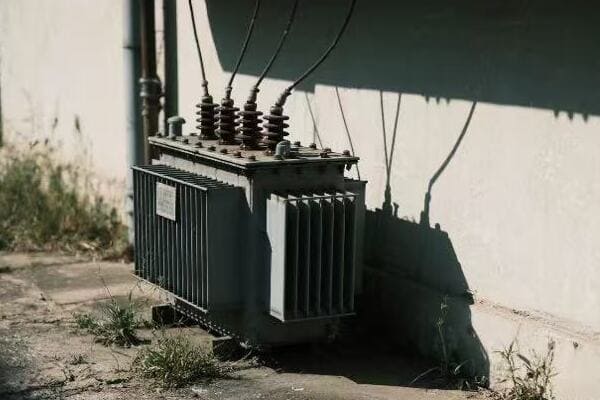
In this article, we’ll explore the best practices for pad mounted transformer safety. From installation to daily operation and maintenance, we’ll cover everything you need to know to keep your community safe and powered.
What Are the Essential Safety Guidelines for Pad Mounted Transformer Installation?
Have you ever wondered what goes into installing those green boxes safely? It’s not just about digging a hole and dropping in a transformer.
Essential safety guidelines for pad mounted transformer installation include site selection, proper grounding, secure enclosure design, and clear labeling. These measures ensure the transformer is safely placed, protected from tampering, and clearly marked for both workers and the public.
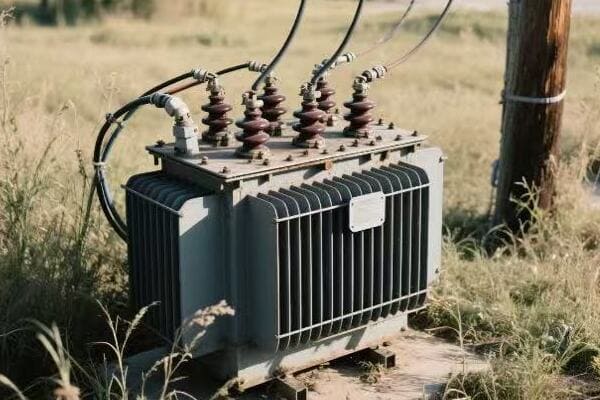
Let’s dive deeper into these safety guidelines:
Site Selection: Location Matters
Choosing the right spot for a pad mounted transformer is crucial for safety.
Key Considerations:
- Distance from buildings
- Accessibility for maintenance
- Protection from flooding
- Clearance from other utilities
Proper Grounding: The Invisible Safety Net
Grounding is like a transformer’s safety harness. It protects against electrical faults and lightning strikes.
Grounding Requirements:
- Low resistance path to earth
- Proper sizing of grounding conductors
- Regular testing and maintenance
Secure Enclosure Design: Keeping Danger Under Lock and Key
The transformer’s enclosure is its first line of defense against tampering and accidents.
Enclosure Features:
- Tamper-resistant locks
- Ventilation for cooling
- Weatherproof construction
- Impact-resistant materials
Clear Labeling: Warning Signs Save Lives
Proper labeling ensures everyone knows the potential dangers.
Essential Labels:
- High voltage warnings
- Emergency contact information
- Transformer specifications
- Safety instructions
| Safety Aspect | Importance | Implementation Challenges |
|---|---|---|
| Site Selection | High | Limited space in urban areas |
| Grounding | Critical | Soil conditions, corrosion |
| Enclosure Design | High | Balancing security and accessibility |
| Labeling | Medium | Maintaining visibility over time |
I remember a challenging installation project in a densely populated urban area. Space was tight, and we had to balance safety requirements with the community’s aesthetic concerns. We chose a location that met all safety standards but was partially hidden by landscaping.
The grounding was tricky due to poor soil conditions. We had to use deep-driven rods and special low-resistance backfill to achieve proper grounding. It was extra work, but I knew it was crucial for long-term safety.
For the enclosure, we used a new design with enhanced tamper-resistant features. Some residents were concerned about the appearance, so we worked with a local artist to create a mural on the enclosure. This not only made it more attractive but also increased visibility, enhancing safety.
Labeling was straightforward, but we added QR codes linking to safety information in multiple languages. This extra step helped ensure that everyone in the diverse community could understand the safety warnings.
This project taught me that installing pad mounted transformers safely is about more than following a checklist. It requires creative problem-solving and community engagement. By addressing both technical requirements and community concerns, we created a safer and more accepted installation.
How Can We Ensure Secure Daily Use of Pad Mounted Transformers Through Operational Safety Protocols?
Ever walked past a transformer and wondered if it’s safe? Operational safety isn’t just for workers – it affects everyone near these power hubs.
Ensuring secure daily use of pad mounted transformers involves implementing strict access controls, regular inspections, proper load management, and public awareness programs. These protocols help prevent accidents, maintain equipment integrity, and promote community safety.
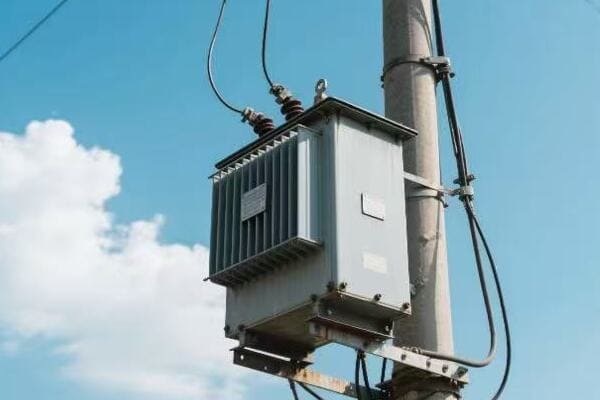
Let’s explore the key aspects of operational safety:
Access Control: Keeping Unauthorized Hands Off
Limiting access to pad mounted transformers is crucial for safety.
Access Control Measures:
- Keyed or electronic locks
- Surveillance cameras
- Fencing in high-risk areas
- Clear "No Trespassing" signs
Regular Inspections: Catching Problems Early
Routine checks help prevent small issues from becoming big dangers.
Inspection Checklist:
- Visual checks for damage or tampering
- Thermal imaging for hotspots
- Oil level and quality tests
- Electrical performance monitoring
Load Management: Balancing Power and Safety
Proper load management prevents overheating and equipment failure.
Load Management Strategies:
- Real-time monitoring systems
- Load balancing across phases
- Peak demand management
- Upgrade planning based on usage trends
Public Awareness: Education as a Safety Tool
Informing the public about transformer safety creates a community-wide safety net.
Awareness Program Components:
- School safety presentations
- Community workshops
- Informational leaflets
- Online resources and social media campaigns
| Safety Protocol | Primary Benefit | Implementation Challenge |
|---|---|---|
| Access Control | Prevents tampering | Balancing security with maintenance access |
| Regular Inspections | Early problem detection | Resource-intensive, scheduling in busy areas |
| Load Management | Prevents overloading | Requires advanced monitoring systems |
| Public Awareness | Reduces accidental interference | Engaging a diverse community effectively |
I once managed the operational safety for a network of pad mounted transformers in a rapidly growing suburban area. The challenge was to maintain safety standards while dealing with increasing power demands and a curious public.
We implemented a multi-layered access control system. Physical locks were complemented by smart sensors that alerted us to any unauthorized access attempts. This system caught several incidents of teenagers trying to open the enclosures, allowing us to intervene before any harm occurred.
Our inspection routine was rigorous. We used drones equipped with thermal cameras for quick, non-intrusive checks of hard-to-reach transformers. This approach not only improved safety but also reduced inspection costs.
Load management became critical as the area grew. We installed smart monitoring systems that gave us real-time data on each transformer’s load. This allowed us to proactively redistribute loads and plan upgrades before any overloading issues arose.
The public awareness campaign was perhaps the most rewarding part. We partnered with local schools to create a "Power Safety Ambassador" program. Kids learned about transformer safety and shared the information with their families. This grassroots approach significantly reduced incidents of public interference with our equipment.
One day, a resident called our emergency line about a strange noise from a transformer near his home. Thanks to our awareness program, he knew not to investigate himself but to report it immediately. We found a developing fault that could have led to a dangerous failure if left unchecked.
This experience showed me that operational safety is a dynamic, ongoing process. It requires technology, vigilance, and community engagement. By involving everyone in safety efforts, we created a safer environment for both our equipment and the public.
How Can We Keep Pad Mounted Transformers in Top Condition with Effective Maintenance Strategies?
Is that transformer in your neighborhood getting the care it needs? Proper maintenance isn’t just about performance – it’s a crucial safety measure.
Keeping pad mounted transformers in top condition requires a comprehensive maintenance strategy including regular inspections, preventive maintenance, condition monitoring, and timely repairs. These practices ensure long-term safety, reliability, and efficiency of the transformer.
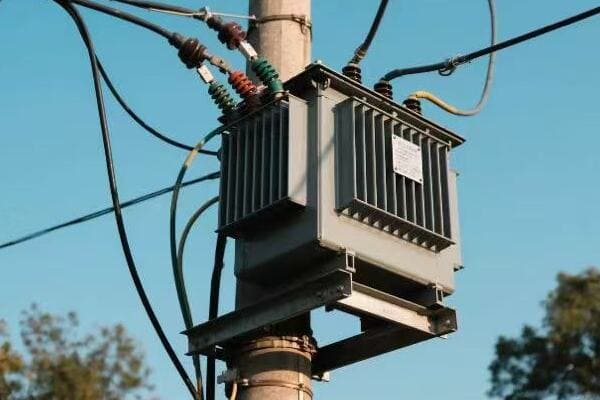
Let’s explore the key components of an effective maintenance strategy:
Regular Inspections: The First Line of Defense
Routine checks catch problems before they become hazards.
Inspection Elements:
- Visual examinations for physical damage
- Infrared scanning for hot spots
- Oil level and quality checks
- Insulation resistance tests
Preventive Maintenance: Stopping Problems Before They Start
Scheduled maintenance tasks keep transformers in peak condition.
Preventive Tasks:
- Oil filtering or replacement
- Gasket and seal replacement
- Cleaning of cooling fins
- Tightening of electrical connections
Condition Monitoring: The Pulse of Your Transformer
Advanced monitoring systems provide real-time health updates.
Monitoring Parameters:
- Temperature (oil and winding)
- Partial discharge activity
- Dissolved gas analysis
- Load and voltage levels
Timely Repairs: Quick Action for Long-Term Safety
Addressing issues promptly prevents minor problems from escalating.
Repair Priorities:
- Oil leaks
- Faulty bushings
- Cooling system malfunctions
- Control and protection system issues
| Maintenance Aspect | Safety Impact | Operational Benefit |
|---|---|---|
| Regular Inspections | Early hazard detection | Prevents unexpected failures |
| Preventive Maintenance | Reduces risk of component failure | Extends transformer life |
| Condition Monitoring | Allows proactive safety measures | Optimizes maintenance scheduling |
| Timely Repairs | Eliminates potential safety threats | Minimizes downtime |
I once managed a maintenance overhaul for a large network of aging pad mounted transformers. The challenge was to improve safety and reliability without causing extensive service interruptions.
We started with a comprehensive inspection program. Using a combination of visual checks, thermal imaging, and oil analysis, we created a health profile for each transformer. This baseline helped us prioritize our maintenance efforts.
For preventive maintenance, we developed a rotating schedule that allowed us to service transformers during off-peak hours. We focused on oil quality, as many of the units showed signs of moisture contamination. By implementing a mobile oil reconditioning process, we were able to improve oil quality without lengthy outages.
Condition monitoring was a game-changer for us. We installed smart sensors on critical transformers that sent real-time data to our control center. This system alerted us to a developing fault in a transformer serving a hospital. We were able to perform emergency maintenance during a planned hospital generator test, avoiding any disruption to this critical facility.
Repairs became more efficient with our new approach. We created a rapid response team equipped with a mobile workshop. This team could perform many repairs on-site, reducing downtime and minimizing safety risks associated with transformer transportation.
One particular success story stands out. A transformer in a residential area had been flagged for unusual temperature fluctuations by our monitoring system. Upon inspection, we found a developing internal fault that could have led to a catastrophic failure. We were able to replace the transformer proactively during a planned neighborhood outage, avoiding what could have been a dangerous emergency situation.
This experience reinforced my belief in the importance of a holistic maintenance strategy. By combining regular inspections, preventive care, advanced monitoring, and quick repairs, we not only improved the safety and reliability of our transformer network but also optimized our operational costs.
Effective maintenance is not just about fixing what’s broken; it’s about creating a safe, reliable, and efficient power distribution system that serves the community for years to come.
What Are the Essential Emergency Response and Safety Measures for Pad Mounted Transformer Incidents?
Have you ever wondered what happens when something goes wrong with a transformer? Being prepared for emergencies is crucial for public safety.
Essential emergency response and safety measures for pad mounted transformer incidents include rapid isolation of the affected area, prompt power shutdown, coordinated response with emergency services, and clear communication with the public. These measures help minimize risks and ensure swift, effective handling of potentially dangerous situations.
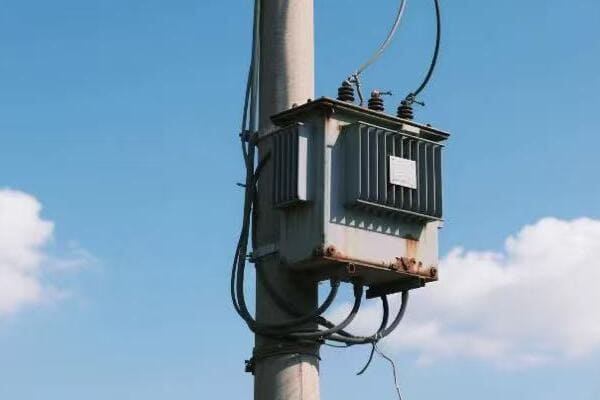
Let’s break down the key components of an effective emergency response plan:
Rapid Isolation: Creating a Safe Zone
Quick action to secure the area is the first step in any transformer emergency.
Isolation Steps:
- Establish a safety perimeter
- Restrict access to authorized personnel only
- Use barriers and warning signs
- Coordinate with local law enforcement
Power Shutdown: Cutting the Danger at Its Source
Safely de-energizing the transformer is crucial to prevent further incidents.
Shutdown Protocol:
- Remote disconnection if possible
- Manual shutdown procedures
- Verification of power isolation
- Grounding for safety
Coordinated Response: Teamwork in Action
Effective emergency management requires seamless cooperation between various teams.
Key Responders:
- Utility emergency crews
- Fire department
- Police
- Medical services
- Environmental response teams
Public Communication: Keeping Everyone Informed and Safe
Clear, timely information helps prevent panic and ensures public safety.
Communication Channels:
- Emergency alert systems
- Social media updates
- Local news outlets
- Door-to-door notifications in affected areas
| Response Element | Primary Objective | Potential Challenges |
|---|---|---|
| Rapid Isolation | Prevent public exposure to hazards | Crowd control in populated areas |
| Power Shutdown | Eliminate electrical dangers | Minimizing service disruption |
| Coordinated Response | Efficient handling of all aspects of the emergency | Communication between different agencies |
| Public Communication | Ensure public safety through information | Reaching all affected individuals quickly |
I remember a particularly challenging incident where a pad mounted transformer caught fire in a busy commercial district. The situation tested our emergency response plan to its limits.
Our first action was to isolate the area. We had practiced this scenario, but the reality of managing curious onlookers and concerned business owners was more difficult than we anticipated. We quickly set up a perimeter, working with local police to keep people at a safe distance.
The power shutdown was tricky. This transformer served several critical businesses, including a data center. We had to balance the need for safety with the potential impact of a prolonged outage. Thanks to our smart grid system, we were able to reroute power to most customers while isolating the affected transformer.
The coordinated response was impressive to witness. Fire crews were on scene within minutes, ready to handle any escalation of the fire. Our environmental team was there to manage any oil leaks. The seamless cooperation between different teams was the result of joint training exercises we had conducted.
Public communication proved to be crucial. We used our emergency alert system to send notifications to all registered users in the area. Our social media team provided real-time updates, which were picked up by local news stations. This helped quell rumors and prevented panic.
One aspect we hadn’t fully prepared for was the aftermath. Once the immediate danger was over, we faced questions about the cause of the fire and concerns about the safety of other transformers in the area. This led us to develop a more comprehensive post-incident communication strategy.
This experience taught me the importance of not just having an emergency plan, but regularly practicing and updating it. It also highlighted the need for clear communication channels between all stakeholders – from emergency responders to the public.
In the weeks following the incident, we conducted a thorough review of our emergency procedures. We made several improvements, including the addition of thermal monitoring systems on all our urban transformers and the development of a more robust public information protocol.
Handling transformer emergencies effectively is about more than just technical know-how. It requires quick thinking, clear communication, and a well-coordinated team effort. By being prepared and responsive, we can ensure that even in the worst situations, we keep our communities safe.
What Are the Latest Advancements and Future Trends in Pad Mounted Transformer Safety?
Are you curious about how technology is making those green boxes in your neighborhood safer? The world of transformer safety is evolving rapidly.
Latest advancements in pad mounted transformer safety include smart monitoring systems, eco-friendly insulating materials, advanced fire suppression technologies, and IoT integration. Future trends point towards AI-driven predictive maintenance, self-healing transformers, and enhanced cybersecurity measures.
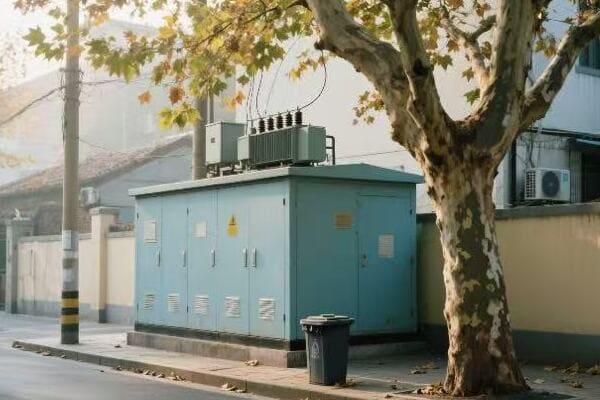
Let’s explore these exciting developments:
Smart Monitoring Systems: The Watchful Eyes
Modern transformers are getting smarter, with systems that can predict and prevent issues.
Smart Features:
- Real-time temperature and load monitoring
- Acoustic sensors for partial discharge detection
- Oil quality sensors
- Automated alerts and reporting
Eco-Friendly Insulating Materials: Green and Safe
New materials are making transformers safer for both people and the environment.
Innovative Materials:
- Biodegradable transformer oils
- Dry-type insulation systems
- Recyclable components
- Low-emission designs
Advanced Fire Suppression: Quenching Dangers Fast
Cutting-edge fire prevention and suppression systems are enhancing safety.
Fire Safety Innovations:
- Automatic fire detection systems
- Environmentally friendly fire-retardant fluids
- Rapid depressurization systems
- Integrated fire suppression mechanisms
IoT Integration: Connected for Safety
The Internet of Things is revolutionizing how we monitor and manage transformer safety.
IoT Applications:
- Remote monitoring and control
- Predictive maintenance algorithms
- Integration with smart grid systems
- Real-time data analytics for performance optimization
| Innovation | Safety Benefit | Implementation Challenge | ||
|---|---|---|---|---|
| Smart Monitoring | Early detection of potential issues | Data management and interpretation | ||
| Eco-Friendly Materials | Reduced environmental and health risks | Cost and performance considerations | ||
| Advanced Fire Suppression | Faster response to fire incidents | Advanced Fire Suppression | Faster response to fire incidents | Integration with existing systems |
| IoT Integration | Comprehensive real-time oversight | Cybersecurity concerns |
I recently had the opportunity to work on a pilot project implementing some of these cutting-edge safety innovations in a suburban transformer network. The experience was eye-opening and showed me the immense potential of these technologies.
We started by retrofitting several pad mounted transformers with smart monitoring systems. The level of insight we gained was remarkable. For instance, one transformer that had always performed adequately suddenly showed signs of increasing partial discharge activity. Thanks to the acoustic sensors, we were able to detect this issue long before it would have been noticeable in a standard inspection.
The eco-friendly insulating materials were a big hit, especially in an area with strong environmental concerns. We replaced the mineral oil in one transformer with a new biodegradable ester fluid. Not only did this reduce the environmental risk, but it also improved the transformer’s thermal performance, allowing it to handle higher loads more safely.
The advanced fire suppression system we installed was put to the test sooner than we expected. A minor internal fault in one transformer triggered the system. It activated instantly, suppressing the potential fire before it could develop. The rapid response prevented any service interruption and showcased the value of this technology in real-world conditions.
Perhaps the most exciting aspect was the IoT integration. We connected our transformers to a central monitoring system, creating a real-time map of our entire network. This allowed us to optimize load distribution, predict maintenance needs, and respond to issues faster than ever before.
However, this project also highlighted some challenges. The amount of data generated by these smart systems was overwhelming at first. We had to develop new analytics tools and train our team to interpret this information effectively. Additionally, the increased connectivity raised cybersecurity concerns, prompting us to implement robust security protocols.
Looking to the future, I’m excited about the potential of AI-driven predictive maintenance. We’re in the early stages of developing algorithms that can predict transformer failures weeks or even months in advance. This could revolutionize our maintenance strategies, making them more proactive and cost-effective.
Another intriguing development is the concept of self-healing transformers. These would be able to automatically adjust their parameters or even repair minor issues without human intervention. While still in the experimental stage, this technology could significantly enhance the reliability and safety of our power distribution systems.
Cybersecurity will undoubtedly be a major focus in the coming years. As our transformers become more connected, protecting them from potential cyber threats will be crucial. We’re exploring advanced encryption methods and isolated network architectures to address this challenge.
The field of pad mounted transformer safety is evolving rapidly, driven by technological advancements and a growing focus on sustainability and reliability. As someone who has worked in this industry for years, I’m thrilled to be part of this evolution. These innovations are not just improving safety; they’re transforming how we think about and manage our power distribution infrastructure.
Conclusion
Pad mounted transformer safety is crucial for reliable power distribution. By implementing best practices in installation, operation, maintenance, and emergency response, and embracing new technologies, we can ensure safer, more efficient, and environmentally friendly power systems for our communities.
Free CHBEB Transformer Catalog Download
Get the full range of CHBEB transformers in one catalog.
Includes oil-immersed, dry-type, pad-mounted, and custom solutions.
Quick Message
Request A free quote
We'd like to work with you
- +86 15558785111
- [email protected]
- +86 15558785111
What We Do
CHINA BEI ER BIAN (CHBEB) GROUP, with 218 million in registered capital, originated from Beijing Beierbian Transformer Group. Headquartered in Beijing for R&D, it operates major production bases in Nanjing and Yueqing, producing high-quality products.
Latest Product
address
BeiJing
No 3,RongJing East Road,BeiJing Economic Technological Development Area,BeiJing,China
JiangSu
No 7️Xiangfeng Road,Jiangning,NanJing,JiangSu,China
WenZhou
No.211, Wei 16 Road, Industrial Zone, Yueqing, Wenzhou, Zhejiang, China.
XiangYang Industrial Zone ,YueQing,WenZhou,ZheJiang,China
contact us
- [email protected]
- +86 13057780111
- +86 13057780111
- +86 15558785111
Copyright © Bei Er Bian Group


